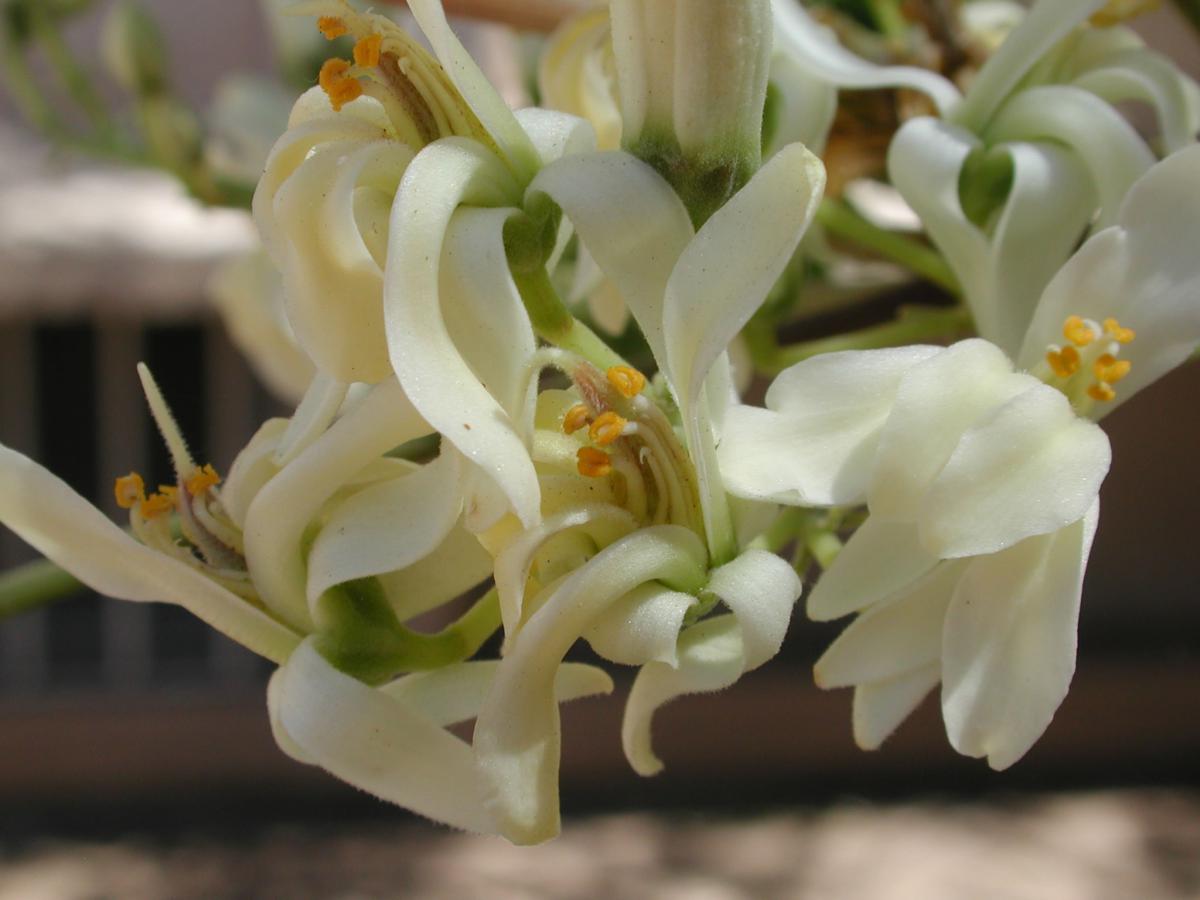 Botanical Characteristics:
Botanical Characteristics:
The horseradish tree, also commonly known as moringa, is a medium to tall tree with pale gray bark. The twigs and young shoots are densely hairy. The leaves are tripinnate, usually with 6 pairs of leaflets, large, and alternately arranged on the stem. Secondary and tertiary leaflets are oppositely arranged, dark green above and pale green underneath. The flowers are small, sweet scented, and cream colored. The pod-like fruits are up to 45 cm. long, containing rows of black oily seeds of which each has 3 papery wings.
Medicinal Value:
This tree is a cardiac and circulatory tonic and used for antiseptic properties. It is used traditionally as a hypotensive and antidiarrheal agent. Studies have shown that the seeds have antispasmodic, anti-inflammatory and diuretic properties. The leaves and unripe pods are high in nutrition and are eaten as vegetables. The essential oil is antifungal and acts as a powerful antioxidant. Its radical scavenging activity protects LDL from oxidation. An infusion of the root bark is dispensed for venereal infections and the treatment of fevers. The pounded root is mixed with salt and used as a poultice for swelling. In India, the root is used as a stimulant in paralytic syndrome and for the treatment of epilepsy. Juice from the leaves and stem bark inhibits staphyloccoccus aureus and is fungicidal to Candida albicans, helminthospirium saticum microsporum gyseum, and trichiphyton mentagrophytes. The 50% ethanolic extract of the root bark is antiviral to the vaccinia virus.

